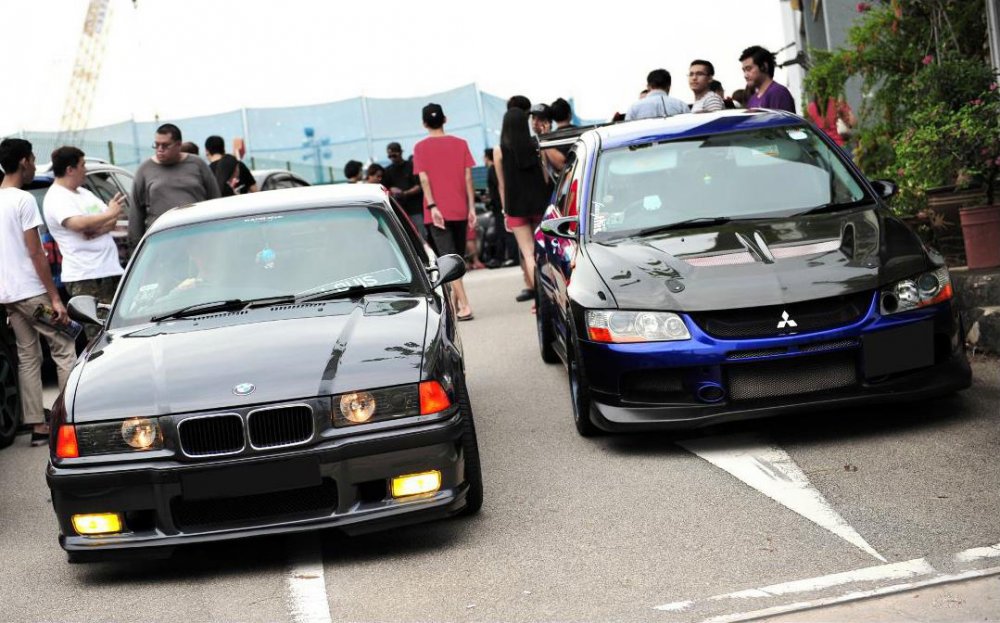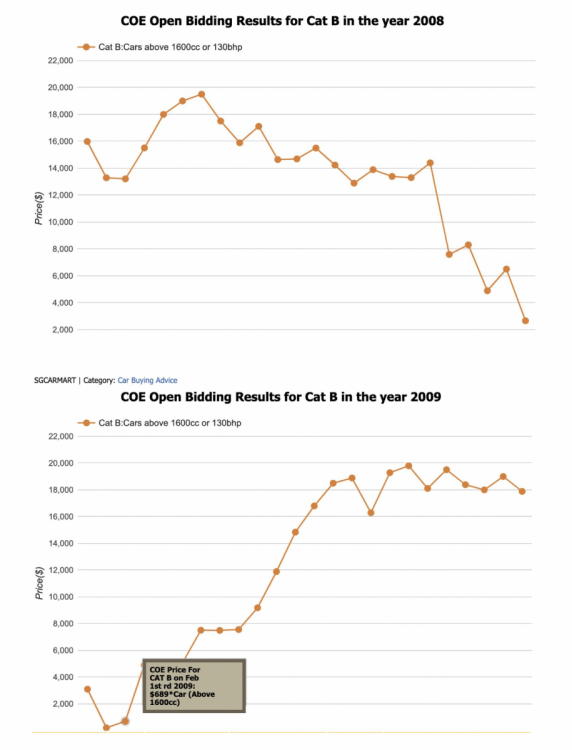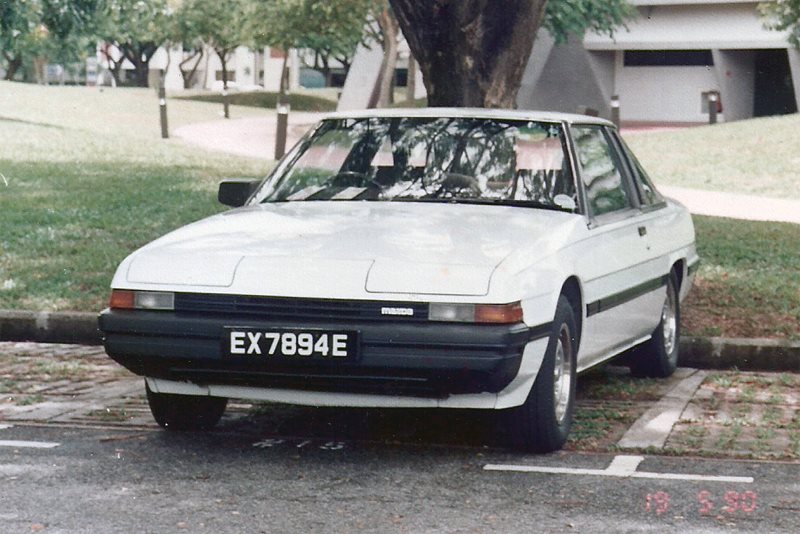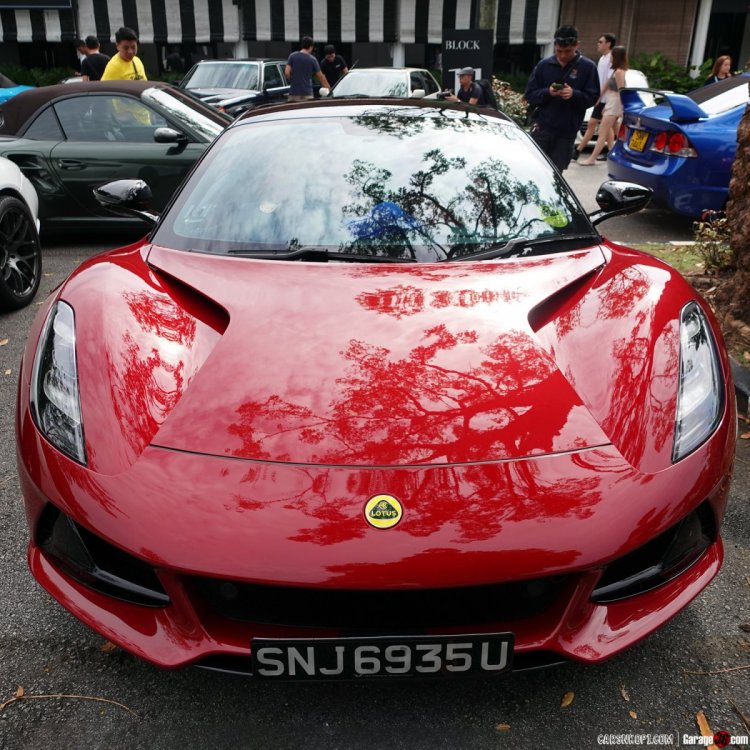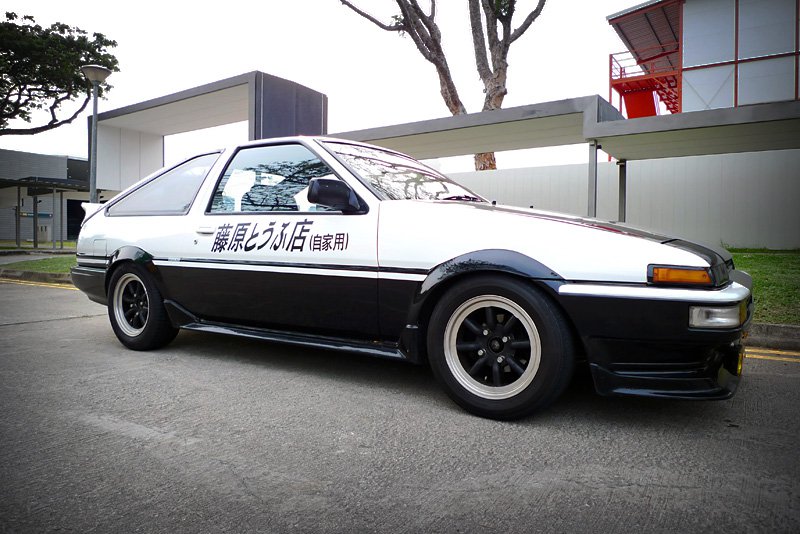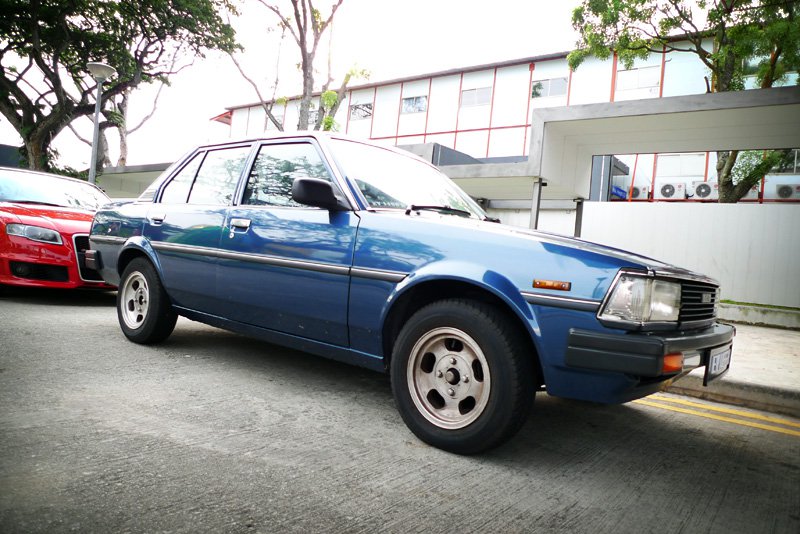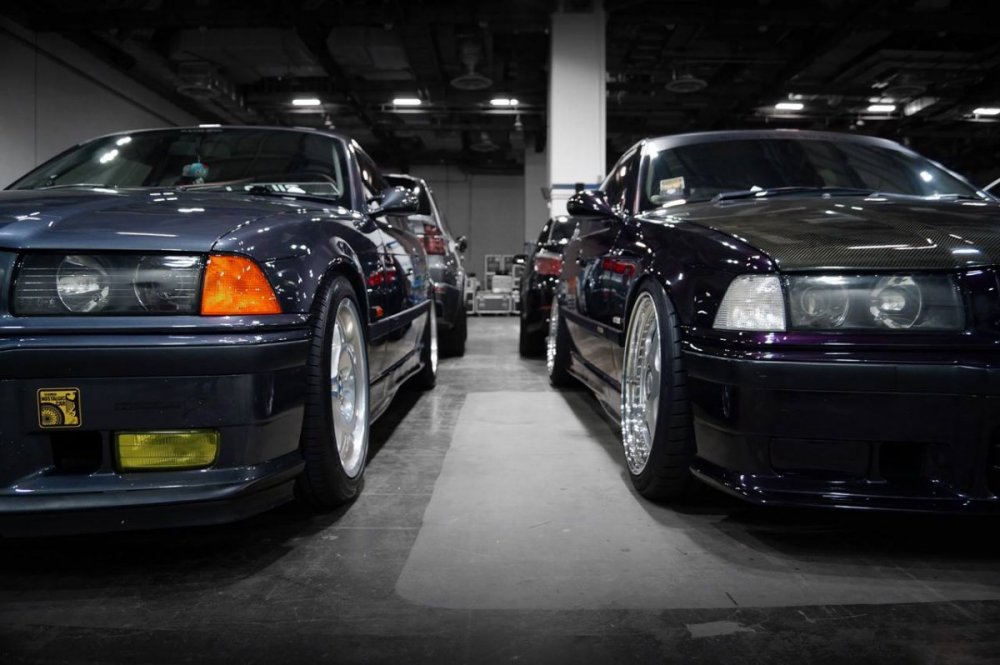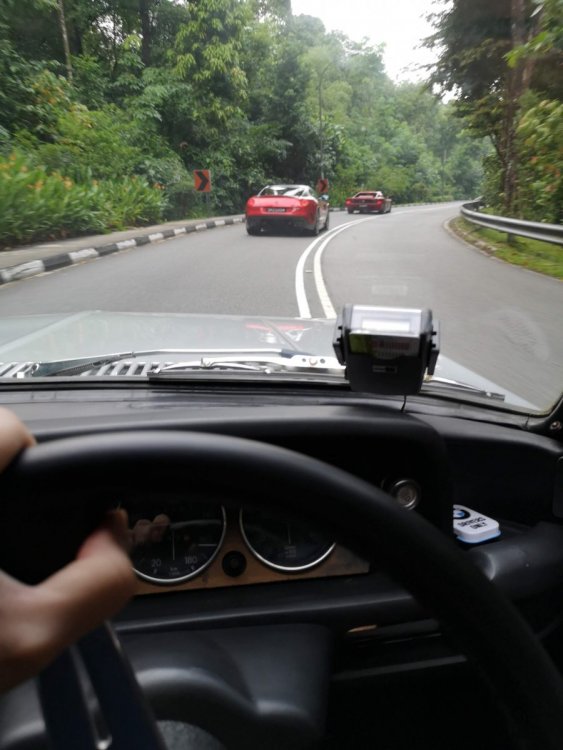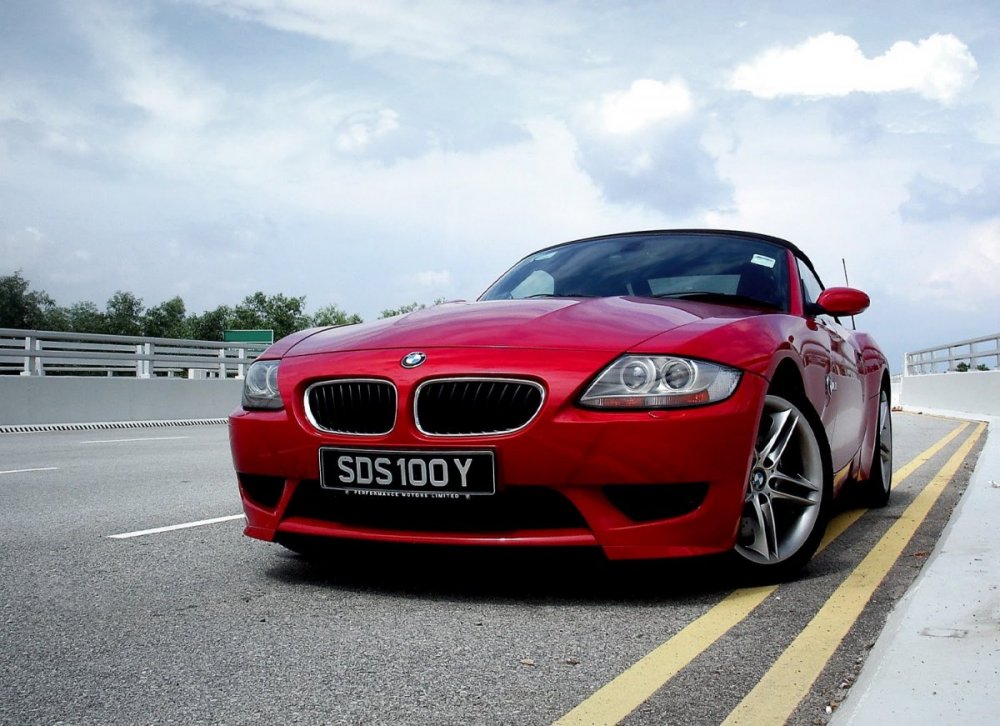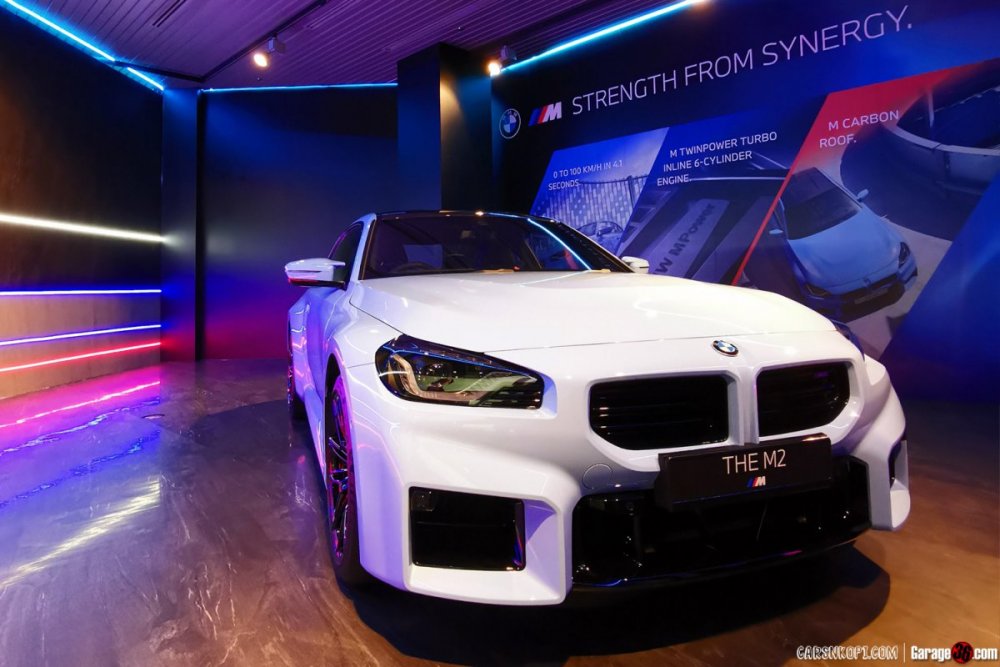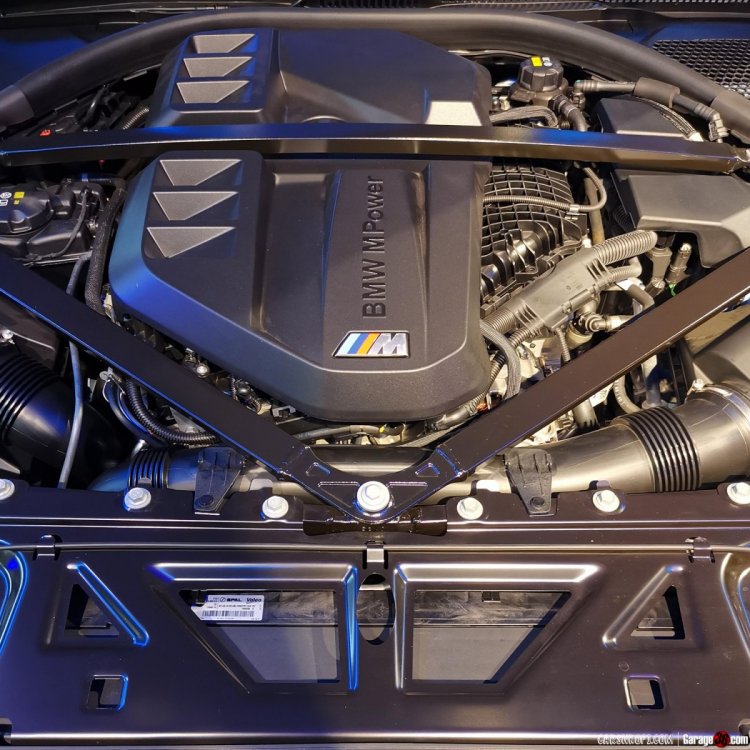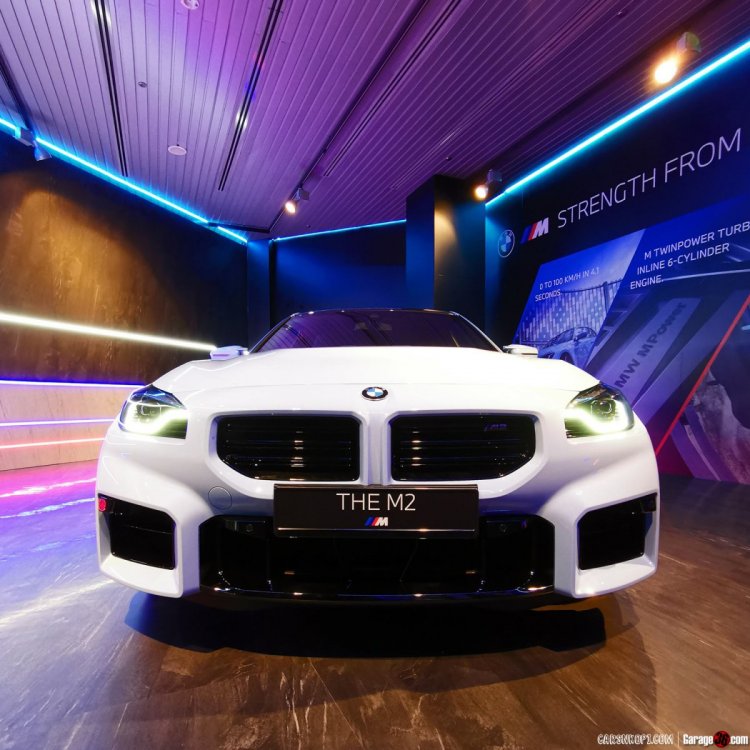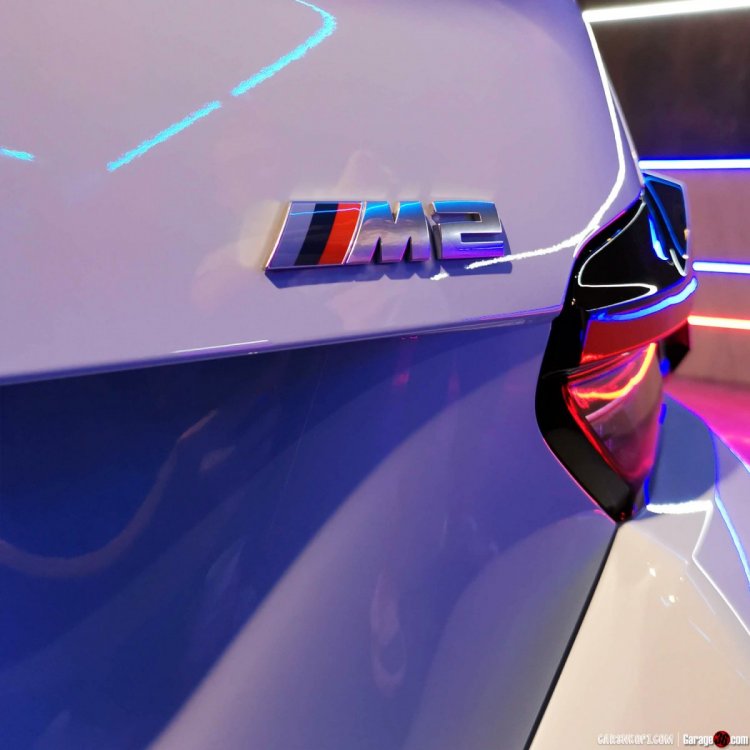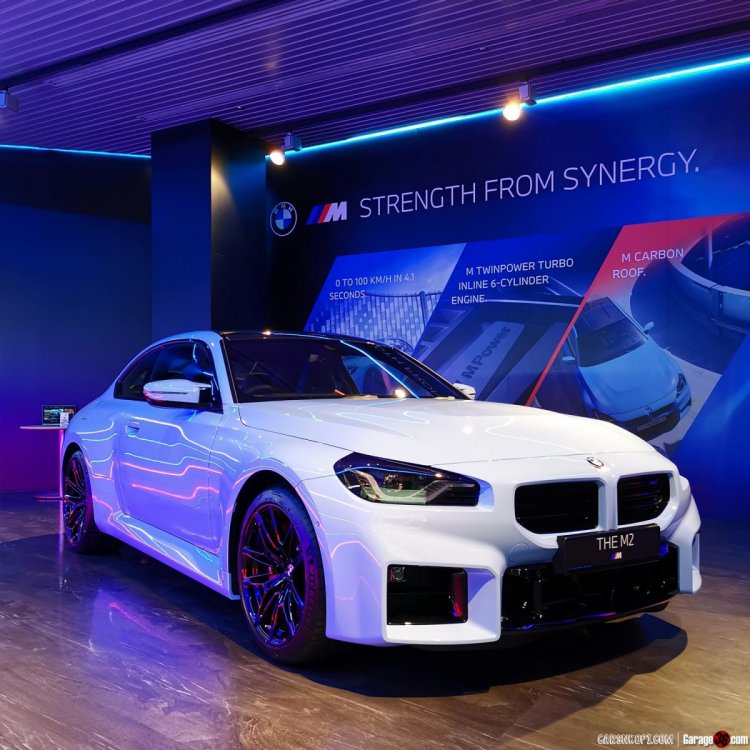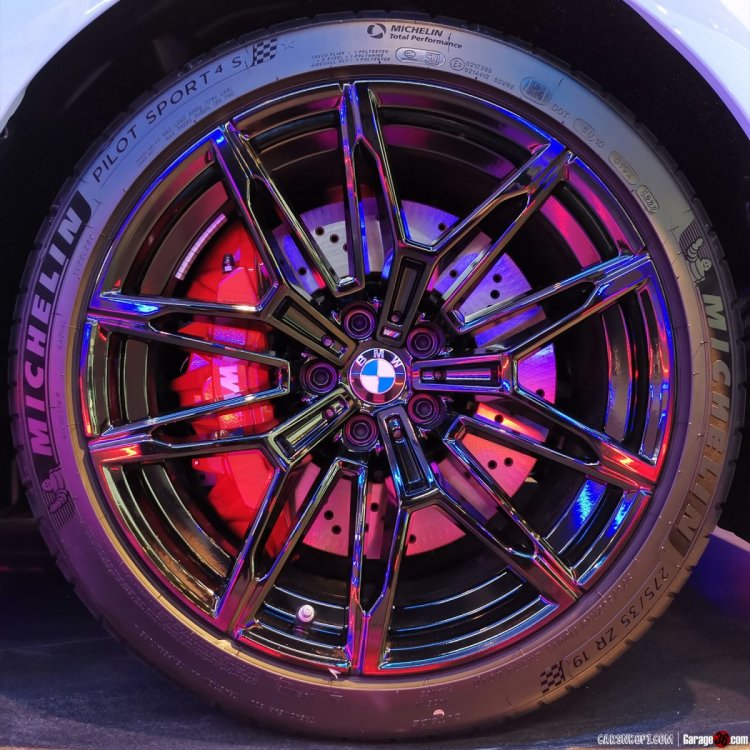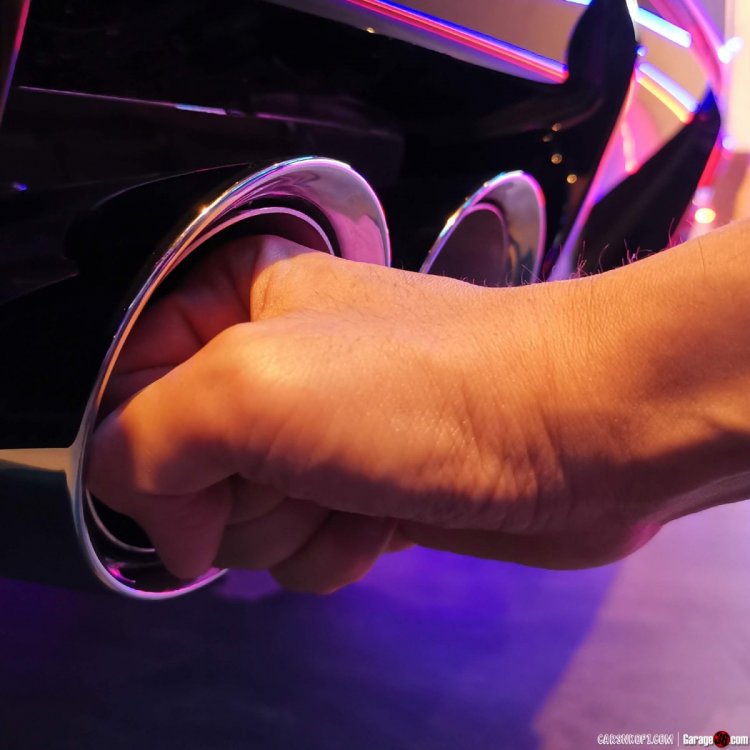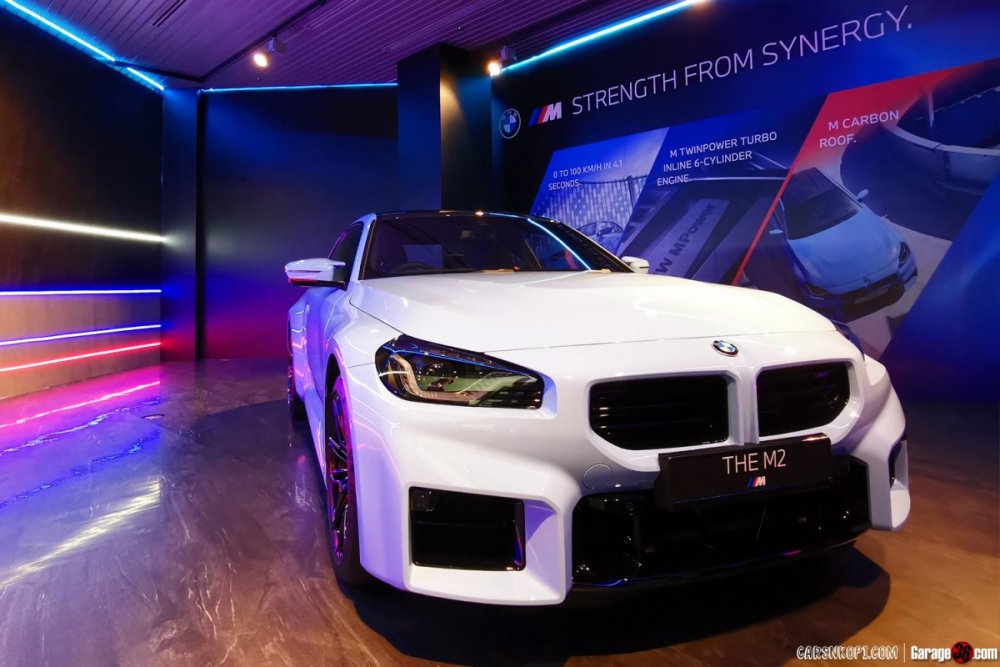Search the Community
Showing results for tags 'Singapore'.
-
AirAsia's new premium flatbed from Singapore offers comfort on a budget source: https://www.straitstimes.com/lifestyle/travel/airasias-new-premium-flatbed-from-singapore-offers-comfort-on-a-budget?cx_testId=20&cx_testVariant=cx_1&cx_artPos=2#cxrecs_s Travelling abroad can be exciting and exhausting at times, whether it’s a short weekend getaway or an important business trip. The stress of packing and getting ready for the trip can leave you feeling fatigued, especially if the flight is in the early morning. In order to arrive at your destination fresh, you need proper rest on board the flight. Therein lies the predicament: Do you have to break the bank to enjoy premium comfort that is associated with flying business class? Thankfully, with AirAsia, you can fly in luxurious comfort at maximum affordability - no matter how far, or near, your next destination is. Having flown over one million passengers to and from Singapore and Kuala Lumpur (KL) to date since January this year, AirAsia has heard its passengers: It now offers 80 flights a week to the Malaysian capital, up from 73, with increased capacity for two of their daily flights. Operating a wide-body Airbus A330, with 377 seats available instead of the usual 180 on the A320, passengers can look forward to a spacious plane which includes quiet zone seats for travellers who prefer fewer disturbances, as well as premium flatbed seats which are new to this route. These seats are perfect for a quick power nap so that you’re recharged and ready to go once you land at Kuala Lumpur International Airport 2. The premium flatbed seats were first available in AirAsia’s inaugural A330 flight to Kuala Lumpur on Nov 10 this year. They provide a highly comfortable flying experience thanks to the ample leg room and adjustable seats which can be fully reclined to become a flatbed. The passengers can stretch out and get some shuteye during the hour-long journey. Plus, these premium flatbed seats come with privacy screens, complimentary meals and convenient power outlets; you can recharge in more ways than one — you won’t have to worry about feeling hungry or your electronics running out of juice when you land. The air fare also comes with a free 40kg check-in baggage allowance so that you can experience fuss-free travelling without any packing woes. Trying these seats in person, one can feel how much of a difference they make compared to flying in a regular economy class seat. The already short flight to KL felt even shorter thanks to the comfort it provided, and the seat controls were simple to operate. Taller passengers will certainly appreciate the generous amount of space afforded, and being able to enjoy the journey in a flatbed made it feel like a truly exceptional flying experience. The best part of AirAsia’s latest offering? Value for money. Choosing the premium flatbed option will not set you back an exorbitant amount. The suite experience in the sky starts from S$169 for AirAsia BIG loyalty members and S$171 for non-members. Flying in comfort and style need not be expensive anymore. If you’re looking for the perfect holiday quickie to enjoy the festive season without breaking the bank, then AirAsia can help you experience the best of both worlds. AirAsia would like to thank its loyal customers for their unwavering belief in the World’s Best Low-Cost Airline. To book your flights today, visit . Fares start from S$51; Premium Flatbed seats start from S$169 for AirAsia BIG loyalty members and S$171 for non-members. No processing fees are included for flights to Malaysia. Click to find out more about AirAsia’s premium flatbed.
-
now got Cathay Pacific Promotion Deals: Smartsaver Economy Class Fares $230 to bangkok, wu hua boh ??? Source: http://www.../cathay-pacific-promotion-deals-smartsaver-economy-class-fares/
- 191 replies
-
- 1
-

-
- cathaypacific
- singapore
- (and 4 more)
-
https://www.straitstimes.com/singapore/household-incomes-rose-in-2022-income-inequality-fell SINGAPORE – Median household income grew in 2022 and income inequality fell when compared with 2021, figures released by the Singapore Department of Statistics (SingStat) on Thursday showed. Among resident employed households, monthly household income from work grew by 6.1 per cent in nominal terms, or before adjusting for inflation, from $9,520 in 2021 to $10,099 in 2022. Median monthly household income from work rose 0.2 per cent in real terms, or after adjusting for inflation, in 2022. Household income from work includes employer Central Provident Fund (CPF) contributions. From 2017 to 2022, median monthly household income from work of resident employed households increased 2.9 per cent cumulatively, or 0.6 per cent per annum in real terms. Such households have at least one employed person, and the household reference person – previously referred to as the head of household – is a Singapore citizen or permanent resident. Taking into account household size, median monthly household income from work per household member rose from $3,027 in 2021 to $3,287 in 2022, an increase of 8.6 per cent in nominal terms, or 2.6 per cent after adjusting for inflation. From 2017 to 2022, median monthly household income per household member grew by 11.9 per cent cumulatively, or 2.3 per cent per annum in real terms. Rise in income for all but top earners Households across most income deciles saw increases in average household income from work per household member after adjusting for inflation. In 2022, the average household income from work per household member of resident employed households in all income groups rose in nominal terms, with the increases ranging from 5.3 per cent to 15.6 per cent. After adjusting for inflation, households in the first nine deciles saw real income growth of 1.1 per cent to 10.1 per cent, while those in the top decile saw a real income decline of 1.3 per cent. Between 2017 and 2022, the average household income from work per household member of resident employed households in the first nine deciles rose 1.5 per cent to 3.0 per cent per annum in real terms, while that in the top decile recorded a decline of 0.4 per cent per annum in real terms. The decline experienced by the top decile was because of a larger increase in household size from 2.26 in 2021 to 2.34 in 2022, compared with households in the other deciles. This, coupled with higher inflation experienced in 2022, contributed to the decline in their real household income in 2022. More money distributed through government schemes Resident households, including households with no employed person, received $5,765 per household member, on average, from government schemes in 2022. This was higher than the $5,257 received in 2021, due to the one-off and transitionary measures in 2022, as well as enhanced schemes, to cushion the impact of the goods and services tax (GST) rate increase and higher inflation on cost of living, said SingStat. Resident households living in one- and two-room Housing Board flats continued to receive the most money from the Government. In 2022, they received $12,189 per household member, on average, from government schemes, close to double the amount received by resident households living in HDB three-room flats. The Gini coefficient based on household income from work per household member – before government transfers and taxes – fell to 0.437 in 2022, from 0.444 in 2021. The Gini coefficient is a measure of income inequality. A Gini coefficient of zero occurs when there is total income equality, and a coefficient of one means there is total inequality. After adjusting for government transfers and taxes, the Gini coefficient in 2022 fell from 0.437 to 0.378. “This reflected the redistributive effect of government transfers and taxes,” said SingStat. Nonetheless, this is still slightly higher than the Gini coefficient of 0.375 in 2020, which was the lowest on record. The report, Key Household Income Trends, 2022, is available on SingStat’s website.
-
https://carsnkopi.wordpress.com/2023/05/08/a-rocky-road-ahead-the-tough-realities-for-todays-young-car-enthusiasts-in-singapore/ It wasn’t easy being an automotive fan when I was a young, overweight boy growing up in neighbourhood schools as my strange obsession with machines so out of reach naturally led to constant ridicule from my peers. Yet, I think I was lucky. Lucky because I spent my primary and secondary schooling days in the glorious 80s and 90s. Which meant that after wasting no time joining the workforce after the army (and through sheer effort, perseverance, plenty of luck and a small loan from my amazing girlfriend), I was smack right in the middle of 2008 and 2009 when the sums added up to allow me to buy my very own set of wheels. Now, if you’ve been paying attention. The years 2008 and 2009 are rather significant. Because for us car-owning, car-loving geeks in Singapore, those were the glory days when COEs dropped to levels so low, rumours were going on about how the Government might even consider scrapping the entire system altogether. Alas, as we now know, that never came to pass. Quite the opposite in fact. Today, our Transport Minister S. Iswaran told Parliament that as a one-off exercise, the Land Transport Authority (LTA) “will bring forward and redistribute the supply from five-year COEs due to expire in the next projected supply peak”. Essentially increasing the supply of certificates of entitlement (COEs) by 24 per cent for smaller, less powerful cars (Category A) and 15 per cent for bigger, more powerful cars (Category B) for the current three-month quota period until July. While it might seem like a sign of relief to the general public, those of us with a tad more vested interest in the matter will understand that such a measure will only serve to sully any chances of a steep increase in COEs quotas in the near future and as such, all hopes of a significant drop in COE prices. It seems to us that the powers that be are happy with COE levels hovering where they are now and have no interest in curtailing what had led to such a dramatic rise. If you are a young enthusiast in Singapore dreaming of one day owning a fun new performance car, I feel for you. Add to that, massive increases in taxes for what many consider their dream cars now mean that even when used, those dreams will no longer be attainable for the vast majority. It doesn’t stop there, with OMVs for many of these beauties now capped at 60k, it would logically make little sense to deregister them, meaning that the majority of these cars will have their COEs renewed once they hit the 10 year mark, which means even less COEs will return to the pool the next decade, which, you guessed it, will only mean even higher premiums for COEs. If you are a young enthusiast in Singapore dreaming of one day owning a fun used performance car, I feel for you. What about cars that have been registered way before these recent rules were implemented? Well, a quick glance through our local automotive classifieds will be more than enough to show you what happens to the resale market when the price of a base-spec Toyota Altis is now asking for over S$160,000. It’s not all local forces at play here of course, with the advent of social media, the hype surrounding certain makes and models of old performance machines have led to a series of “taxes” laid on. “JDM tax”, “Tofu tax”, “Initial D tax”, “Mighty car mods tax”, they all basically mean the same thing, astronomical prices increases on cars that just a couple of years ago no one would even bother to even look at. It’s not all the internets fault of course, the pivot towards SUVs have also contributed to this calamity as the world suffered from years upon years when automotive manufacturers thumbed their collective noses at enthusiasts who were literally begging for the affordable, attainable fun legends we grew up loving. But nein, it was all for nought. To rub salt into our wounds, Mitsubishi even brought out their new Eclipse as an SUV. Today, Mitsubishi is a shadow of its once glorious self and they really only have themselves to blame. And so, with manufacturers no longer building brand new fun sports cars for a period of time, the market for used fun sports cars naturally (with the help of social media) blew the F up and along with that, dragging up the prices for pretty much everything else with a remote chance of being a “classic”. And in a country where such cars are especially rare, you don’t need to be a genius to know what has happened. Things are starting to change of course, we Toyota leading the charge with their GR Yaris, GR Corolla and Supra, but then, you’d have to contend with their equally charged up brand new prices. If you are a young enthusiast in Singapore dreaming of one day owning a fun classic performance car, I feel for you. So, where do we go from here? It’s a tough one to answer. As covered in the media recently and I’m sure plenty of us have talked about it, we all know who are the ones driving up the prices of COE fast and furiously, and I’m sure we all know (even if some might not want to admit it) why nothing is being done or even mentioned about curtailing these car-sharing companies and other PHV registered vehicles. As mentioned once again by our transport minister, “we must expect the long-term trajectory for COE prices to be upwards“. In short, don’t expect COEs to ever come down, and don’t expect the current Goverment to ever be kind to your car-loving dreams. With so many obstacles now neatly in place, It is going to be a painful, rocky road ahead for all car-lovers. And so, if you are a young enthusiast in Singapore, I feel for you and hope that you will also get lucky one day. I’m afraid with the way things are, mine might be running out come December 2026.
- 111 replies
-
- 16
-

-

-
Hot on the heels of the rather erm, provocative XM, BMW Asia has now brought along its smaller, though no less anticipate stablemate, the M2 to our local shores and we were lucky enough to be privy to an early media preview. While the new car is slightly larger all around (except for height where 7mm is shaved off) from its predecessor, an almost 50hp bump in power (from the M2 Competition) means the new car is even quicker than the car it replaces, though only by .1 of a second for both gearbox options. Yes, gearbox options, because thanks to the heros of homologation at BMW Asia, you can spec your brand new M2 with a third pedal and 6 do-it-yourself forward gears should you feel the 8-speed automatic isn't quite "macho" enough. And macho might be the words that come to mind when chancing upon the M2. While it might not be as pretty as the previous M2, which let's face it, is one of the best looking BMWs out there even today, the new car does have its own distinct visual flavour. Personally, I think the front end is too fussy and overdesigned. Where aesthetics are concerned for this generation, the less well-endowed M240i in Thundernight Metallic takes the cake. You know the drill. BMW's S58B30. 3-litres, Twin Turbos, 6-cylinders all lined up to punch out a heady 460 horses and 500Nm of torques. A healthy dollop more punch than the considerably more expensive Porsche 718 Cayman GTS. Which then brings us to the price. Whilst never intended to be anywhere near "cheap", the new car represents a considerable increase from its M2 Competition predecessor and an even bigger leap from the original M2 launched back in 2016. At S$380,000 (without COE), the new M2 is a rather expensive proposition, but nowadays, what isn't?
-
wow.. A public statement by Lee Wei Ling and Lee Hsien Yang: We have no confidence in PM Lee Hsien Loong and are worried about Singapore's future. https://www.facebook.com/weiling.lee.980?hc_ref=NEWSFEED https://drive.google.com/file/d/0ByodqaSLlpPIWHdRdFE2QlZYbzg/view
- 3,278 replies
-
- 7
-

-
- lee hsien loong
- lee kuan yew
- (and 5 more)
-
A Singaporean man has been charged with dangerous driving over a four-car accident in New Zealand that killed a motorcyclist. Lew Wei Kiong, 29, had been due in the Dunedin District Court on Tuesday (Dec 8) to face a count of dangerous driving causing death. Three new charges of dangerous driving causing injury were also due to be brought against him, reported the Otago Daily Times, but the case has been adjourned to Dec 22. Lew, who works at the Energy Market Authority (EMA), was involved in the accident along the state highway in North Otago, about 20km south of Oamaru, on Nov 29. EMA confirmed to Shin Min Daily News that Lew was an employee and that it was extending aid to two employees in New Zealand. According to stuff.co.nz, Lew was driving a rented Toyota and had allegedly crossed the double yellow lines on the highway to overtake a group of cars. He crashed into two cars and a motorcycle travelling in the opposite direction. The passenger in the Toyota, who is also believed to be Singaporean, had to be cut from the car and was flown to Dunedin Public Hospital with serious injuries. Five others suffered injuries, while the motorcyclist, 39-year-old Craig Alan Chambers, died at the scene. New Zealand police had blamed the car crash on driver "inattention". The accident also reportedly reignited a debate over tourist drivers and the condition of roads in New Zealand, with Labour Party MP Damien O'Connor suggesting that poor road design could have led to the crash. He said that certain roads on the country's south island could be confusing for foreign drivers and clearer signage was needed. http://www.straitstimes.com/asia/australianz/singapore-tourist-charged-with-dangerous-driving-after-fatal-crash-in-new-zealand?utm_campaign=Echobox&utm_medium=Social&utm_source=Facebook#xtor=CS1-10
- 190 replies
-
- 5
-

-
- crash
- new zealand
-
(and 6 more)
Tagged with:
-
Salute to these men! Sediya! http://theunseensingapore.blogspot.sg/2013/10/the-unseen-singapore-10-sg-movers.html
-
My niece texted me this article because she was preparing for secondary school project and asked for my inputs. My initial reply to her:" K**! School reopen less than a month and you kanna project liao meh? Sai school! " I think it must be some anti-drug campaign but now with this human rights angle, dunno how to explain it to her. She think that angmohs are very kaypoh. LOL (which I agree) . http://carrot-uncensored.blogspot.sg/2012/05/human-rights-is-bulls**t-in-war-against.html Once again, some foreign organisation has decided to stick its nose into Singapore's affairs and critique our "draconian" laws and capital punishment for drug trafficking. The death sentence for all convicted drug traffickers was set in place for a reason. We cannot afford to let drug problems cripple families and the nation's well-being, especially when Singapore has no natural resources and is reliant on its human resources. Singaporeans are educated on the hazards of drug abuse right from a young age through teachers and parents, as well as public campaigns. For those who take a wrong step and fall into substance abuse, there are rehab houses that help them out of the pits and put them back on track in life. To reinforce these efforts, steps must also be taken to prevent, or at least minimise, the inflow of drugs. What use is there if children were taught not to abuse drugs but ecstasy, heroin, cocaine and all the devils were easily available off street corners? According to the United Nations Office on Drugs and Crime's World Drug Report 2011, the annual prevalence of opiates (defined as a drug containing or derived from opium) use as a percentage of the population aged 15-64 was 0.01. Malaysia and Indonesia, which also impose the death penalty on convicted drug traffickers, have a prevalence of use of 0.94% and 0.16% respectively. That prevalence of use in the US was 5.9% – the highest of all countries surveyed. Costa Rica ranks second at 2.8%. The same study looks at cocaine and cannibis usage across the world too. While data for these abuses are lacking for Singapore, prevalence of cannibis use in Malaysia and Indonesia was 1.6% and 0.4% respectively. The prevalence of cocaine use in Indonesia was less than 0.1%. No data was available for Malaysia. That prevalence of cocaine and cannibis use in the US was 2.4% and 13.7% respectively. So why am I drawing references to the US? Well, because the US is such a huge advocator of human rights, and the downside to giving its people so much freedom to live however they want is the flood of social ills and crime. With freedom comes responsibility, and humans are not exactly absolutely responsible beings. If we could get away with something, chances are, we would do it. And this leads me to a piece of news that hit our newspapers earlier this week. New York-headquarted Human Rights Watch (HRW) sent the Singapore president an appeal against the death sentence of Malaysian national Yong Vui Kong, who was found guilty of possessing 42.27 grams of heroin in 2008. Yong was initially sentenced to death in December 2008 but he managed to escape the gallows several times through appeals. Yong's third appeal was denied in early April, and it has been reported that he is down to his last chance. What I found appalling was what Phil Robertson, HRW deputy Asia director, said in his appeal: "Singapore’s mandatory death sentences clearly violate international human rights standards. "Executing another young man for a narcotics offence will only reinforce the image of Singapore’s authorities as oblivious to basic rights and due process." Sticking to the death sentence is necessary to demonstrate our resolution in maintaining a drug-free (or as much as possible) society and to discourage would-be traffickers. As a possible future parent, I want Singapore to be as clean as possible, so that my children will not risk being exposed to lifestyle drugs as a user or a peddler and have his/her life wasted. Yong had a choice – he chose to carry drugs across our border. I will never be able to understand the depth of pain his family has to go through with this looming death sentence, and I hope never would I have to understand it. Still, I must admit that this is indeed very unfortunate. While one could offer sympathy, there is no place for pardon. Yong must be punished, and in accordance to Singapore's anti-drug laws. Singapore cannot give potential drug traffickers a single ounce of hope that they might escape death should they ever try to bring drugs onto our land. I hope our president will stay strong and not waver under pressure from outsiders who have no stake in Singapore's present and future.
- 191 replies
-
- 3
-

-
- drugs
- human rights
-
(and 3 more)
Tagged with:
-

NV200 takes out a Domino's delivery bike at a discretionary right turn
millanda posted a blog entry in MyAutoBlog
TL;DR - Domino's Pizza delivery bike plays real-life game of dodge the NV200 at a discretionary right turn Pizza delivery gone wrong. Watch this 40 second clip of the collision. What Happened? A Nissan NV200 collided with a Domino's Pizza delivery bike at the discretionary right turn junction on Pioneer North Road in Singapore, under the PIE Flyover. The incident caused damage to both vehicles and raised concerns about road safety for delivery drivers. According to eyewitnesses, the Domino's Pizza delivery bike was traveling straight on Pioneer North Road when the Nissan NV200 made a right turn without signaling, causing the collision. The delivery driver was thrown from his bike and sustained minor injuries, while the NV200 suffered significant damage to its front end. Online Chat Amongst the hundreds of comments, the majority of them were pinpointing that this road is extremely dangerous. Hello @LTA? So please have more patience for people who are delivering your food, they’re delivering more than just your pizza - it comes with a side of risk. Nissan NV200 driver and the rider must have forgotten they're not playing Mario Kart… Takeaway The incident highlights the importance of road safety, especially at discretionary right turns where accidents are usually most seen at such junctions. Delivery riders, who are often required to navigate busy roads and make multiple stops in a short amount of time, make them the ones that are most at risk of such accidents. Above all, all drivers should practice cautiousness on the road and be extra vigilant - treat all junctions as accident black-spot zones and ride expecting the unexpected. ========= Be the first to get the latest road/ COE news and get first dibs on exclusive promos and giveaways in our Telegram SGCM Community. Join us today! -
https://content.mycareersfuture.gov.sg/singapore-employment-salary-2023-outlook-industries/ Our job market may look healthy, but there are headwinds on the horizon for Singaporean employees and jobseekers. Without sugar-coating it, there are three significant headwinds affecting Singapore’s job market outlook. The global economic downturn where the cyclical changes will reduce employment opportunities. The ongoing pandemic crisis is still uncertain in its trajectory and may linger on for some time. Technological disruptions, particularly digitalisation, will continue to induce structural changes that make jobs and skills redundant. That said, it’s not entirely all doom and gloom for local employees and jobseekers, though there are indicators that Singapore’s labour market is slowing down with economic growth numbers. According to figures released by the Ministry of Trade and Industry (MTI) in November 2022, Singapore’s economic growth is expected to slow to 0.5 to 2.5% in 2023, due to global uncertainties, down from the projected 3.5% growth in 2022. Singapore’s Ministry of Manpower revealed in an October 2022 report: “In the coming months, a deteriorating global economic environment, higher global inflation, as well as geopolitical tensions could affect the labour market outlook. “Some unevenness in employment growth may emerge across sectors”, they elaborated. On the numbers front, there was a “slight uptick” in unemployment rates, and a rise in retrenchments, though both remained on par with pre-Covid levels. What’s the big picture that affects Singapore’s job market outlook? Arturo Bris, Professor of Finance and Director of the IMD World Competitiveness Centre Switzerland, shared his take with Workipedia by MyCareersFuture: “From the economic standpoint, there are two main uncertainties. “The first one is the global economic crisis caused by the invasion of Ukraine and the disruption of global supply chains. “Its effects on inflation and growth are heard everywhere, including Singapore. As an economy that relies on foreign trade, it is extremely sensitive. “The second uncertainty pertains to China and the negative worrying signals from the Asian giant. In particular, there are concerns about the growth prospects of China and its preference to grow its domestic market instead of relying on neighbouring countries.” Which Singapore hiring industries could see headwinds in 2023? In fact, according to a Business Times report, Maybank analyst Chua Hak Bin noted that many sectors, such as hospitality, construction and healthcare, are still experiencing acute labour shortages. For Singaporean workers, recent employment number gains came from industries such as information and communications, professional services, and financial services. However, the MOM report states that administrative and support services saw a sustained decline, “partly reflecting the gradual scale-back of Covid-related occupations”. MTI also reported that weaker economic sentiments would weigh on the growth of outward-oriented sectors in Singapore, such as our electronics and chemicals clusters. That said, the ministry expects that Singapore’s strong recovery in air travel and international visitor arrivals will continue to benefit sectors related to aviation and tourism. This includes air transport, arts, entertainment and recreation, and consumer-facing sectors like food and beverage services. Lifting of travel restrictions in Singapore and the region has also boosted the recovery of the professional services sector. Professor Lawrence Loh, from NUS Business Schools’ Department of Strategy and Policy, said to Workipedia by MyCareersFuture: “In view of the international economic outlook, particular industries in Singapore like manufacturing and financial services will be significantly challenged due to weaker demands in 2023. “While industries affected by the pandemic such as aviation and travel have been recovering, these have to be continually on the alert for any unexpected new twist in the situation. “Moving into next year, as always, technology will almost always have impacts on organisational structures and products, as well as individual jobs and skills.” “This will happen across a broad spectrum of industries, particularly those that are manually driven such as retail, hospitality and even financial services.” What about 2023 salaries, then? 2023 looks to be a mixed bag when it comes to salaries, according to Mercer’s recently released Total Renumeration Survey (TRS). The flagship annual compensation and benefits benchmarking study identifies key remuneration trends and predictions for hiring and pay for 2023. Over 1000 Singapore-based companies participated in this year’s survey. While local employers anticipate salary increases in 2023 to surpass pre-pandemic levels, inflation is also depressing sentiment, with more than half of the companies in Singapore (54%) adopting a wait-and-see approach to their salary budgets. “Employers remain cautious about bumping up wages to match inflation,” said Mansi Sabharwal, Reward Products Leader at Mercer Singapore. “And many are turning to less permanent solutions such as benchmarking competition to stay competitive in the market (70%), focusing on total rewards communication (69%) and increasing wages of lower-income employees (55%).” Some other key findings from Mercer’s report on salaries revealed which industries could have the highest salary increments as below: Logistics: (4.4%) Banking and Finance (4.27%) Tech (4.06%) Real Estate (3.25%) The aerospace industry is also forecasted to see improvement, with salary increments expected to rise from 3.09% to 3.52% in 2023, given global travel continues to gain momentum in the aftermath of Covid-19. Working in an industry that might slow down? Here’s some advice Associate Prof. Trevor Yu, from the College of Business’ (Nanyang Business School) Division of Leadership, Management & Organisation, shared the below advice: Take a proactive look at your current skill set and project what areas you need to develop and upskill in the next few years. Consider also whether it is time to explore other options in faster-growing sectors like those listed above and what steps are needed to reskill for possible career changes and transitions. Finally, how much meaning do you derive from your current job role? Do you feel engaged both physically and psychologically? What steps can you take to craft or negotiate a better situation at work so that you can give the best that your talent can offer? Prof. Loh concludes: “There are two perennial challenges for jobs – creations and displacements – both of which will be critically influenced by the job market headwinds. “For organisations, especially those more vulnerable to the headwinds, continued transformation is the way forward – it is key to constantly adapt, innovate and strive for resilience. “As such, no skill will remain relevant forever – in fact, the shelf life for skills is getting shorter and shorter. “For workers at all levels, capability development is the surest solution – it is imperative to always upskill and reskill!”
- 29 replies
-
SINGAPORE: Singapore Airlines (SIA) will cut 96 per cent of its capacity that had been scheduled up to the end of April, said the airline on Monday (Mar 23). The decision was made after the further tightening of border controls around the world over the last week to stem the COVID-19 outbreak, SIA said in a news release. About 138 SIA and SilkAir planes, out of a total fleet of 147, will be grounded as a result. Scoot, the company's low-cost unit, will suspend "most of its network" and will ground all but two of its 49 planes. This comes amid the "greatest challenge that the SIA Group has faced in its existence", the company said. "It is unclear when the SIA Group can begin to resume normal services, given the uncertainty as to when the stringent border controls will be lifted," it said. "The resultant collapse in the demand for air travel has led to a significant decline in SIA’s passenger revenues." https://www.channelnewsasia.com/news/business/covid-19-singapore-airlines-suspend-flights-coronavirus-12566248?cid=FBcna bad year for aviation
-
https://www.nytimes.com/2023/04/12/opinion/international-world/singapore-autocracy-democracy.html By Farah Stockman Do benevolent autocracies get better results than democracies? I’ve pondered this question since last summer, when I heard highly educated Kenyans tell me that democracy hadn’t brought the economic development they sorely need. They gushed about the way that Lee Kuan Yew, the founding father of modern Singapore, transformed his impoverished city-state into one of the wealthiest societies on earth in just one generation. Consider that in 1960, Singapore and Jamaica had roughly the same G.D.P. per capita — about $425, according to World Bank data. By 2021, Singapore’s G.D.P. had risen to $72,794, while Jamaica’s was just $5,181. It’s no wonder that Lee Kuan Yew has become a folk hero. It’s not hard to find people from South Africa, Lebanon and Sri Lanka praying for their own Lee Kuan Yew. Last month, President Biden hosted his second democracy summit and gave a speech about the epic global struggle between democracy and autocracy. Singapore — a U.S. partner rated “partly free” by Freedom House — was not invited. But Washington’s talking points about the imperative of democracy ignore a simple fact: Some autocrats are admired because they get results. While established democracies do better economically than autocracies overall, the handful of autocrats who focused on economic growth — rather than their own Swiss bank accounts — have managed to outperform fledgling democracies, according to Ronald Gilson, professor emeritus of law and business at Columbia University, who co-wrote a 2011 paper, “Economically Benevolent Dictators: Lessons for Developing Democracies.” Chile under Augusto Pinochet, South Korea under Park Chung-hee and China under Deng Xiaoping stand out as countries that achieved wholesale economic transformation, while weak democracies stagnated. The paper, which was co-written by Curtis Milhaupt of Stanford Law School, spells out why benevolent authoritarians have an easier time plugging their countries into the global economy. Elites tend to resist big changes that would cut into their own bottom lines, even if those changes are good for the country. Autocrats have more tools to get them on board. An autocrat’s word can convince job-creating investors that their businesses will be protected, filling the void of a shaky court system. In a benevolent autocracy, legitimacy often comes not from elections but from the ability to show material improvements in people’s lives. In a democracy, leaders are often too busy fending off political challenges to make grand economic plans. They are frequently voted out of office before they can see those plans through. To win elections, politicians make short-term promises — like cutting taxes while increasing benefits — that don’t always make economic sense in the long run. But benevolent autocracies have fatal flaws, too. Benevolent dictators are hard to find. There’s no guarantee that they will stay benevolent or that their successors will be as competent. After a country successfully transitions its economy, the advantages of this system seem to fade. But by then, a system of nearly unchecked power at the top has been entrenched. Singapore is a case in point. Lee Kuan Yew contended that people don’t pine for democracy. First and foremost, he said, “they want homes, medicine, jobs, schools,” according to the 1998 book “Lee Kuan Yew: The Man and His Ideas.” He provided those things by pairing business-friendly policies from the West (predictable courts, low taxes, zero tolerance for corruption and an embrace of meritocracy) with socialist-leaning policies from autocracies (heavy government involvement in economic planning and little tolerance for dissent). He created a vast system of public housing, where about 80 percent of Singaporeans currently live. People buy and resell long-term leases to government-built apartments with money the government essentially forced them to save. Singapore holds elections, but the ruling party, which controls much of the media and a host of lucrative jobs, has remained in power since independence. Anyone who has visited the city-state of nearly six million people has seen how much cleaner and safer and more orderly it feels than the United States. Its airport doubles as a high-end mall. Public gardens bloom free of the litter, pickpockets or homeless encampments that have become familiar sights in U.S. cities. Robberies are so rare — and surveillance so pervasive — that some high-end bars don’t even lock their doors at night. Ferraris and Lamborghinis are everywhere, as if the slogan “a chicken in every pot” had turned into “a sports car in every parking space.” But now, eight years after the death of Lee Kuan Yew, Singapore is at a crossroads. It’s being run by his eldest son, Prime Minister Lee Hsien Loong, who leans heavily on his father’s legacy. Elections for the largely ceremonial post of president are expected in September and parliamentary elections are due by 2025. The prime minister’s potential successor has already been picked. But the ruling People’s Action Party has never looked so vulnerable. Critics say Singapore is becoming more like a plutocracy, in which well-paid yes men with the right connections to the Lee family rise up the ranks. Today, Singapore is a place where forklift operators can face jail time for taking one-dollar bribes but executives from the Singaporean conglomerate Keppel — who paid millions in bribes, according to the U.S. Justice Department — got off with “stern warnings.” (Officials in Singapore have said that they didn’t have enough evidence to take the case to court.) The trouble is that the system requires someone like Lee Kuan Yew at the top — strict and charismatic, as Michael Barr, author of “Singapore: A Modern History,” told me. “But no one who has that political skill would ever rise to the top today because that person would be regarded as a threat,” he said. Perhaps the clearest sign that something in Singapore has gone wrong is the fact that Lee Kuan Yew’s youngest son and one of his grandsons say they are now living in exile, fearful that they would be arrested if they ever returned. “My uncle doesn’t want competing claims to legitimacy,” Lee Kuan Yew’s grandson Shengwu Li told me over a cup of tea in Cambridge, Mass. “Authoritarian systems don’t survive by taking chances. If they think there’s a 5 percent chance I’ll be a problem for them, they want that to be zero.” The irony is that Mr. Li, a 38-year-old assistant professor of economics at Harvard who was just awarded a top honor in his field, doesn’t have political ambitions. Soft-spoken and cerebral, he says he’s happy working on his theorems in a place where nobody gives him special treatment because he’s related to Lee Kuan Yew. After 10 years studying at Oxford and Stanford, he got used to certain freedoms. In the summer of 2017, while he was visiting his parents in Singapore, he wrote comments in a private Facebook post that criticized the government for using the courts to silence its critics. The government is “very litigious and has a pliant court system,” he wrote. Soon after, he got a tip that he was about to be prosecuted for it. He hurried back to the United States. Even during the Trump administration, which was known for its harsh treatment of immigrants, he felt relieved to land on American soil because he knew there were independent judges, he told me. He was convicted in absentia in Singapore for scandalizing the judiciary and fined $15,000, which bars him from running for Parliament for five years. Last month, officials in Singapore announced an ongoing police investigation of Shengwu Li’s parents, who are accused of manipulating the then-90-year-old Lee Kuan Yew into changing his will and lying about it afterward. The accusation stems from a simmering disagreement over the fate of the family home, which Lee Kuan Yew said publicly at times that he wanted demolished after his death. Lee Hsien Yang, Lee Kuan Yew’s youngest son, says he has been fighting to honor his father’s wish not to have a cult of personality built around the house. But he says his elder brother, the prime minister, wants to preserve the house as a national monument to bolster his own political legitimacy. Lee Hsien Yang spoke out publicly against his brother, only to get hit with an investigation. Eventually, he fled the country, like his son. It seems to be an example of what Kenneth Paul Tan, a Singaporean professor of cultural studies, calls the “politics of evermore sophisticated bullying.” At its core, the fight isn’t about a house or a will. It’s about the future of Singapore. “The institutions in Singapore, whether it is the judiciary, the civil service, the army, the institutions of higher learning, have all gradually come under direct control in a way that stifles independent thinking and challenge,” Lee Hsien Yang told me. Lee Kuan Yew would solicit different views and occasionally change his mind, he said. “Today, the Singapore authorities no longer have people who would challenge the system to say, ‘Here’s my view. I don’t think you are doing the right thing.’ They are too well-paid.” (Ho Moon Shin, a government spokesperson, denied that Lee Hsien Yang and Shengwu Li are in exile, saying they are traveling on Singaporean passports and are free to return home. She also said Prime Minister Lee Hsien Loong recused himself from the cases involving the family house.) Lee Hsien Yang and his son Shengwu Li avoided politics for most of their lives, but since the feud over the house burst into public view, both have voiced sympathy for the political opposition, lending the legitimacy of that crucial family name. Yet their ability to help the opposition has been curtailed by the accusations against them. The episode has exposed the cracks in Singapore’s celebrated system. If Lee Kuan Yew’s son and grandson can feel compelled to flee, what can happen to ordinary people? Political scientists weren’t sure that Singapore’s highly successful system would outlast Lee Kuan Yew. By the end of his life, even the great man himself spoke of preparing for the day when his party would lose power. That’s the thing about benevolent autocracies: They tend to expire. They either cease to be autocracies — as happened in South Korea and Chile — or they cease to be benevolent.
-
@AriesGoat hey bro. Any latest news for the VRS estate launch? Saw the 2 mk4 red sedan and estate on a trailer last week.
-
Seriously?
- 26 replies
-
- stop false accusation
- stop
- (and 14 more)
-
Had been driving in Thailand by a Thailand registered car very often. Most my drive is at the North Thailand, to the Golden triangle, Mae Hong Son, Pai, Chiang Rai, Nana etc. This time I'm gonna drive all the way from Singapore to Northern Thailand. I have a few doubts hope that any bros and sis can advice. My furthest drive so far is to Genting. Time is not an issue because I have the full months off ( July 2011) . My main concerns are the stop over as I tend not to drive over 600km per day except for the first day, Singapore to Penang. I hope someone can guide me through. Like the border crossing in Jalan Kayu Hitam. What must I do step by step. I had already have my log card ready, valid passport and IDL. But is it really necessary to buy another comprehensive insurance that cover Thailand since the local one only covers 80.5km from Thailand. A company quoted me $426.00 for 15 days coverage in Thailand but is out of my budget, anyone can comment on this or any recommendations will be appreciate!!! Can I buy the third party insurance for 1 month in Thailand border as I planned to stay in Thailand for around 16 days but the Visa crossing the border by road only stamp 14 days, what must I do to extend? And what is the preferred province to stop over for a night or two before heading North to Chiang Mai? Initially my plan is SG - PENANG - PHUKET - PRACHUAP KHIRI KHAN - LOP BURI - CHIANG MAI. Is this route okay? For bros and sis have similar experience before, PLEASE , I really need your help advice on the route planning. Thank you very very much! [/font][/b][/size][/size]
-
We love cars! Or at least, I do. I assume you do too, since you’re on this platform. But as an aspiring car owner, I also grapple with the realities of living in Singapore. We have again been acclaimed as the “World’s Most Expensive City” together with New York City, our inflation is the highest it’s been in 15 years, and our homes start at hundred of thousands of dollars. In the face of such problems, a car seems like the least important of my worries. But let’s say in about 10 years time (can you tell I’m a young person yet?) I have enough money to get a car. Nothing special, a Toyota Corolla from Sgcarmart perhaps? How would I get there? And what are the costs that I’ll face afterwards? Join me and let’s see if buying a car is still worth it in Singapore. The many hidden costs of owning a car in SG To understand what it takes to buy a car I think a good place to start is to see the costs involved. As I’m sure you all know, we need to deal with COE (Certificate of Entitlement). It’s a metaphorical piece of paper that you buy in order to give you the right to own and use a car in the streets of Singapore. The COE lasts for 10 years. After 10 years, you have the option to refresh the COE and continue to use your car, or let it expire and be forced to de-register your car. Let’s say I’m a first time buyer, and that I’m getting a brand new Toyota Corolla Altis. The standard variant. This is what you’ll see in the official Toyota website. Now don’t worry, this is already taking into account COE for this year, as of April 2023. This specific model makes 96 brake horsepower with a 1,598cc engine. Therefore, this model would qualify for a Cat A COE. This category is for cars that have an engine less than or equal to 1600cc & make 130bhp or less. However, let’s take a look at how much this COE costs as of March 2023. You have spent almost 2 thirds of the entire car’s cost on the right to have gotten the car in the first place. Now let’s fast forward 10 years. The maths is going to get real complicated real quick. 10 years later.... I’ve had a wonderful time with my Corolla. It has served me well. It has seen me through so many things. My marriage. My first kids, my divorce, my wallowing loneliness. Ok, that got dark but you see what I mean. Some time has passed. I now need to make a decision to renew my COE or let it expire. To renew it, I will need to pay the PQP (Prevailing Quota Premium) of the COE. PQP is the moving average of the COE prices in the past 3 months. To calculate PQP, simply take the existing COE prices of the most recent three months and find its average. We can take the PQP from the above image and see that it is $85,845. I’ll let you decide whether it’s worth renewing the COE. In another scenario, let’s say I let it expire. And there’s actually a proper reason to do this called rebate. For any fellow Gen Z, this is our “cashback”. Upon de-registering a vehicle, we get a certain value by adding up our COE rebate and PARF (Preferential Additional Registration Fee ) rebate. Our COE rebate is based on the Quota Premium paid and the remaining COE left. Here’s a formula: Your COE rebate = [(Quota Premium Paid x Number of months left)/120 months]. Here’s an example: It is 2021. Adam has 12 months of COE left on his car. Assuming that his Quota Premium (QP) paid back in 2012 was $40,000, the COE rebate he will receive is ($40,000 x 12) / 120 = $4,000 PARF rebate is based on the Additional Registration Fee (ARF) value. Your PARF rebate = [ARF x % based on the age of your car] ARF is a tax imposed upon the registration of your vehicle, which depends on your car's Open Market Value (OMV). A car's OMV is the original cost of production of the vehicle before surcharges, taxes and the dealer's profit. Here’s a table to help you visualise the PARF rebate. According to Budget Direct Insurance, the Toyota’s OMV is $19,436. So the ARF for this car, as it is less than $20,000, will be 100% of its value at $19,436. However, as in this scenario I have spent over 10 years with my car, there will be no PARF rebate. I will also have no COE rebate because I have no months left on that either. I will get a tidy sum of... So if I'd like to continue using my vehicle after likely having paid for it in full, I'd need to once again pay for a permit worth several times over the actual cost of my car, even after taxes. Some people have clearly gotten sick of this, like this biker, who started a discussion on Facebook after showing why he doesn't use his motorycle anymore, calling it a ransom. It's clear that many people felt the same as him, calling the COE system a con or daylight robbery, that once their COE expires, they will likely stop using their vehicle. And yet, COE is at a record high this year. So I'd like to ask you all, what does owning a car mean to you? For more information about renewing COE, do head over to this guide on COE renewal. ========= Be the first to get the latest road/ COE news and get first dibs on exclusive promos and giveaways in our Telegram SGCM Community. Join us today!
-
Singapore-Desaru ferry service approved by MPA after safety requirements fulfilled SINGAPORE: A ferry service between Tanah Merah terminal in Singapore and Desaru Coast terminal in Johor has been approved by the Maritime and Port Authority of Singapore (MPA). Ferry operator Batamfast will run the service, but a start date has yet to be announced. "The commencement of the new ferry service is pending Batamfast’s final preparations to operate this new ferry service, including obtaining the necessary approvals from other authorities," said MPA in a statement on Tuesday (Jun 21). Transport Minister S Iswaran said in a Facebook post on Tuesday that Batamfast may start running services between the two ferry terminals when it is ready. "The start of the ferry service between Singapore and Desaru is another step forward in restoring connectivity between Singapore and Malaysia," he added. The MPA approval comes after the authority said in April that it would approve the ferry service only if it was satisfied the service could be operated safely. The route will be operated by Batamfast's subsidiary Desaru Link Ferry Services, and the journey is expected to take about two hours. The authority received a proposal from Batamfast in March this year to operate the new service between Desaru Coast and Tanah Merah. MPA had asked Batamfast to submit a navigational safety assessment for the proposed route and an emergency response plan. It also asked for an attestation from the certifying authorities that the ferries to be used were fit for the proposed voyage. "MPA has reviewed the submission and assessed that Batamfast has met the safety requirements for the proposed ferry service," it said on Tuesday. Besides the proposed direct route between Desaru Coast and Tanah Merah ferry terminals, MPA has also approved Batamfast’s application of an alternative route between Tanah Merah and Tanjung Pengelih ferry terminals, to be utilised in the event of inclement weather or rough sea conditions. https://www.channelnewsasia.com/singapore/singapore-desaru-coast-tanah-merah-ferry-service-start-batamfast-2759856 2 hours to get to Desaru, sounds alright ...
-
Were they drunk? Aftermath of the party * The damage was extensive * used paper plates and uneaten food were thrown into the pool. * The toilets were also choked and damaged. * it took the cleaners 6 hours to clean up * The family's visitors have, on occasion, parked their cars illegally, despite repeated reminders not to do so. * their $500 tenant deposit had been forfeited because of the incident. It was a poolside party that had fellow residents seeing red. MediaCorp has learnt that the management council of Mimosa Park condominium in Yio Chu Kang has banned 2006 Singapore Idol Hady Mirza and his family, who live in the development, from using its recreational facilities after a private party on Oct 2. It is understood that the council was not pleased by what it saw in the wake of that party at the condominium's poolside clubhouse. For one thing, used paper plates and uneaten food were thrown into the pool. The toilets were also choked and damaged. Cleaners had to be called in to clean up the mess to appease residents who wanted to use the facilities. The damage was extensive and it took the cleaners six hours to complete the task. This is not the first time Hady and his family of five - who have been living in a four-bedroom rented apartment in the condo for the last three years - have broken the rules, said chairman of the condominium's management council Leonard Lee. The family's visitors have, on occasion, parked their cars illegally, despite repeated reminders not to do so. As a result, the wheels of their cars have been clamped on a number of occasions, said Mr Lee. But the mess in the pool proved to be the last straw. Last week, the chairman sent a letter to the family informing them that their $500 tenant deposit had been forfeited because of the incident. The family's access passes have also been cancelled, which means they cannot use the shared facilities - the pool, gym and squash court. The ban is for a period of six months. In the strongly-worded letter, Mr Lee said the episode "has caused severe inconvenience to our residents and other users" and, as a result, "additional expenses" had to be incurred to restore the premises. He added: "We are holding you responsible for all costs ... we shall be forfeiting your tenant deposit which will be used towards the partial cost of the cleaning operations". Mr Lee did not say how much "all costs" amounted to but added the council reserved the right to recover any other costs "that may have incurred as a result of your irresponsible behaviour". When contacted, 30-year-old Hady declined to comment on the matter, saying "it's personal". However, MediaCorp understands that his mother, Madam Mardiana Ahmad, has sent a letter of apology to the management council.
-
https://www.straitstimes.com/asia/se-asia/ex-pm-mahathir-says-malaysia-should-claim-singapore-and-riau-islands Stir ah stir ah, he's really full of shxx. Stay safe all Cheers
- 150 replies
-
- 10
-

-
.png)
-
you bloody busy with changing car because of a flat tyre, where got time. that one cfm is young and impulse, but must also have hit some nerves along the way lah, otherwise why are ppl so sensitive.
-
https://www.straitstimes.com/singapore/environment/new-species-of-cockroach-discovered-in-singapore-named-after-pokemon SINGAPORE - A new cockroach species has been found in a forested nature reserve in Singapore. Named after Pheromosa, a cockroach-like Pokemon that appears in the seventh generation of the video game series, the species was discovered through comparing differences between the male genitalia of specimens with its closest relative from Borneo, among other checks. Entomologist Foo Maosheng, who co-authored the finding, said: “There are some similarities between Pheromosa and the delicate cockroach that we found, such as having a long antenna, wings that mimic a hood and long slender legs. “Both my collaborator and I are Pokemon fans, so we thought, why not name it after a Pokemon inspired by a cockroach.” Entomology is the study of insects and their relationship to humans, the environment and other organisms. The discovery of Nocticola pheromosa, published in the Journal of Asia-Pacific Entomology on Feb 27, marks the first time a cockroach from the genus Nocticola – which means fond of the night in Latin – has been found here. Mr Foo, a scientific officer at the National University of Singapore (NUS) Lee Kong Chian Natural History Museum, said: “There are very few studies done on cockroaches and termites, in part because they are less charismatic than bees, butterflies and beetles.” The cockroach’s identity was a mystery when a few male specimens were collected between 2016 and 2017 in a secondary forest in Bukit Timah Nature Reserve during an insect survey. “There were no formal records of the cockroach in Singapore,” said Mr Foo. “Since its DNA did not match any species recorded online, it does add to the suggestion that this species had not been formally documented.” Help arrived when Mr Cristian C. Lucanas, an entomologist from the UPLB Museum of Natural History in the Philippines and the study’s lead author, came across pictures of the species on The Biodiversity of Singapore website and contacted Mr Foo to help with his quest. Realising that the cockroach had not been scientifically documented before, Mr Lucanas decided to publish the findings after dissecting it. The new species joins 22 others from its genus, which has been found in tropical Africa, India, mainland Asia and South-east Asia as well as Australia. Unlike hardy American cockroaches, which most people tend to associate cockroaches with, Nocticola pheromosa is more delicate as those of its kind tend to live in well-protected ecosystems, said Mr Foo. But not much is known of the Singapore species, including where they came from. Nocticola pheromosa is more delicate as those of its kind tend to live in well-protected ecosystems. Unlike hardy American cockroaches, which most people tend to associate cockroaches with, Nocticola pheromosa is more delicate as those of its kind tend to live in well-protected ecosystems, said Mr Foo. But not much is known of the Singapore species, including where they came from. While some people might be averse to cockroaches, they can play a part in the ecosystem, he said. “A few forest cockroaches are pollinators and a handful do help with nutrient cycling. “Cockroaches do have a role but because of negative connotations and their appearance, they tend to be overlooked even during insect surveys.” Mr Foo’s love for all insects and Pokemon has earned him the moniker of “bug catcher” among his students at NUS and other entomologists. He said: “I’m like one of those bug-type trainers (in Pokemon) as I go to different places to find out more about what insects we have. “This contributes to the museum for research and education and The Biodiversity of Singapore website, which is kind of like our local Pokedex.” The Pheromosa cockroach joins several other creatures named after Pokemon. In 2021, three Australian beetles identified by their fiery colours were named after rare bird Pokemon Articuno, Zapdos and Moltres.
- 27 replies
-
- 13
-

-

-

-
.png)
-
TL;DR - More road potholes spotted around Singapore after days of continuous downpour, resulting in imbalance of roads and bumpy vehicles. Potholes are just the worst. Watch this 63-second video of different vehicles driving past multiple road potholes. What are potholes? The smallest road flaws can develop into potholes. Due to water seepage and ongoing pressure from heavy cars, these crevices enlarge. A pothole is created when specific sections of the road deteriorate and collapse over time. In general, potholes are more likely to form the more rain there is. A small pothole can get wider and deeper if the traffic in the area is high. Read here to find out what you can do in the event you encounter a pothole that cannot be avoided: https://www.sgcarmart.com/news/writeup.php?AID=579 What happened? If you reside in Singapore, you’d know just how insane the rainfall has been for the past two weeks. The downpour on Tuesday (28th Feb) was heaviest over the eastern and southern parts of Singapore, with the daily total rainfall of 225.5mm recorded at Kallang the highest in 30 years for the month of February. The last time there was such a deluge in February was when 159.3mm of rainfall was recorded on Feb 4, 1995. (Source: The Straits Times) As a result of the continuous heavy rain, the number of potholes proliferated all around Singapore. The video submitted on SGRV showed just one of the many potholes that formed at Pandan Road. Writer’s note: Be mindful driving along this stretch! Online Comments A minute of silence for all the cars that have been lowered… So, if your car has been lowered, please drive carefully and brake early when approaching such potholes - trust me, it’s a different kind of heartbreak when you scratch your undercarriage. And don’t ‘geh-kiang’ and speed. You might just rip out your bumper in the process of acting cool. With the wet weather continuing throughout the whole of next week, we expect to see even more potholes. Thus, please ride safely and be extra cautious especially on the roads! ========= Be the first to get the latest road/ COE news and get first dibs on exclusive promos and giveaways in our Telegram SGCM Community. Join us today!
-

Maserati GranTurismo S unable to outrun a Nissan NV200 on the KJE
jameskarlchan posted a blog entry in MyAutoBlog
TL;DR – A Nissan NV200 and a Maserati GranTurismo S were caught on camera racing one another along the KJE. However, the race did not go as one would have expected. The Maserati GranTurismo S is a beautiful car. Image credit: Google It’s a 4.7L car housing a V8 engine that pushes 400+ horsepower. We’re talking 0 to 100km/hr in about 4 seconds! But yet, in this 47-second video, you can see how it loses to a Nissan NV200 (a van). What happened? The first thing that comes to mind after watching the video is a quote from Vin Diesel in the ‘Fast & Furious’ franchise. Image credit: Magical quote.com The video starts as how you would expect it to go. The GranTurismo speeds ahead of the NV200. But the forward thinking NV200 driver takes advantage of an empty pocket of space on the first lane and barrels forward. Meanwhile, the GranTurismo got stuck behind slower vehicles on the left. The comments should be good! Online Chatter ========= Be the first to get the latest road/ COE news and get first dibs on exclusive promos and giveaways in our Telegram SGCM Community. Join us today!- 8 comments
-
- maserati
- granturismo
-
(and 6 more)
Tagged with:





